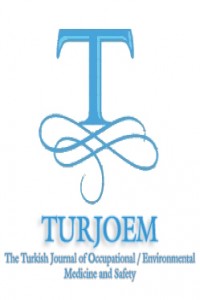Abstract
A psychoactive
substance is a substance that affects the central nervous system, alters brain
functions, and leads to changes in perception, mood and behavior.
Apart from
well-known psychoactive substances, there are some substances called
new-generation psychoactive substances that have risen in recent years. Such
substances may be divided into 4 categories: Synthetic cannabinoids, cathinone
derivatives, phenylethylamine derivatives, and others including tryptamines,
piperazines, hallucinogenic mushrooms, craton and harmine. In addition, these
are called legal drugs, custom-design or herbal drugs in the market. The use of such substances has been more and
more common as they are released under various titles, easily accessible
online, not listed as narcotic drugs, pass tests since they are not detected in
pre-scan tests, and easily available in social circles since they are
odor-free, and there are some legal gaps, as well.
The
pharmacodynamics and pharmacokinetics and acute and chronic effects of the
majority of these new psychoactive substances are not fully known, while some
studies suggest that people develop tolerance and addiction towards such
substances.
Identification
of such substances has become more important in the recent years. However,
there are some challenges such as the use of isomers and derivatives in tests
for such substances rather than the actual substances, the length of the period
of time spent to offer more insight to their structures, and the lack of a
system with a licensed library in effect. This study analyzes the
identification of the new-generation psychoactive substances challenges
encountered meanwhile.
References
- Dilek SALKIM IŞLEK, Salih CENGIZ, Gülten RAYIMOĞLU, Fatma ÇAVUŞ Emel Hülya YÜKSELOĞLU
- Istanbul University Institute of Forensic Sciences, 34303, Cerrahpasa, Istanbul, Turkey
Abstract
References
- Dilek SALKIM IŞLEK, Salih CENGIZ, Gülten RAYIMOĞLU, Fatma ÇAVUŞ Emel Hülya YÜKSELOĞLU
- Istanbul University Institute of Forensic Sciences, 34303, Cerrahpasa, Istanbul, Turkey
Details
| Journal Section | Articles |
|---|---|
| Authors | |
| Publication Date | February 16, 2017 |
| Published in Issue | Year 2017 Volume: Volume 2 Issue: İssue 1 (1) - 2.İnternational Congress Of Forensic Toxicology |


